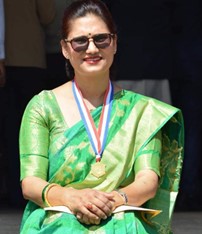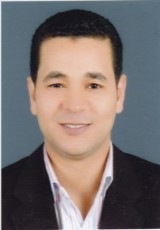Previous Fellows of IMEMS Durham UNESCO World Heritage Site Fellowships
Dr Sandhya Khanal
1 April - 1 June 2023
Dr Sandhya Khanal is Associate Professor of Art and Iconography at Tribhuvan University’s Central Department of Nepalese History, Culture and Archaeology, Kirtipur Nepal. She has worked across the fields of Heritages, Ethnic Communities and the Tangible and Intangible Culture of Nepal since 2012. She has conducted fieldwork in Nepal as a researcher with teams from Tribhuvan University, Ministry of Culture, Government of Nepal, Department of Archaeology, Government of Nepal, Hatemalo Samaj, Pashupati Area Development Trust (World Heritage Site), Durham and Oxford University and the latter with funding from AHRC and the British Academy.
Dr Khanal worked to produce a research framework to provide a foundation to continue further study of heritages of Durham World Heritage Site, and an opportunity to understand the diversity and complexity of socio-cultural dynamics.
Anouk Lafortune-Bernard
1 October - 1 December 2019
Anouk was based in the Archaeology Department at Durham University. Her research focused on the social and economic impact of cultural heritage and community engagement. Her PhD has analysed the social and economic impact of the development of Lumbini Birthplace of the Buddha and World Heritage Site on local communities. She has been affiliated with Durham University's UNESCO Chair in Archaeological Ethics and Practice in Cultural Heritage since 2016 and has conducted research at several World Heritage Sites in South Asia and Europe, as part of the Chair's research programme.
Click here to view Anouk's report
Wahid Omran
1 November 2019-20 December 2019
Handicrafts are considered a sustainable means of livelihood of large proportion of the local community in Durham. Field-visits, interviews and survey with shopkeepers in Durham in order is important to prepare a list of 50 objects, photographing and, ideally purchasing them. Information concerning each object’s manufacture cost, recommended retail sale price, material and place of manufacture will also be recorded.
I then populated a table with 25 objects within the UNESCO World Heritage Visitor Centre. Visitors to the Centre were invited to select their favorite items as well as complete a survey form recording their preferences such as cost, local manufacture, theme etc. We will also record participant demographics. It is the first systematic survey of the corpus of handicrafts and souvenirs available for sale to visitors and pilgrims within Durham, as well as provide a preliminary understanding of their selection preferences and willingness to pay.


/prod01/prodbucket01/media/durham-university/research-/research-institutes/institute-of-medieval-and-early-modern-studies/23358-1.jpg)


